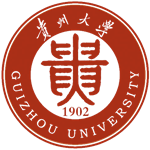The predecessor of Guizhou Normal University, "National Guiyang Teachers College", was founded in 1941 and was one of the eight national teachers' colleges in the country at that time. In October 1950, it was renamed "Guiyang Normal University"; in October 1954, the Ministry of Education entrusted the Guizhou Provincial People's Government to manage it; in 1985, it was renamed "Guizhou Normal University". In 1996, it was identified as a provincial key university by the People's Government of Guizhou Province; in 2015, it became an institution of higher learning jointly established by the Ministry of Education and the People's Government of Guizhou Province; in 2017, it was selected as one of the "National First Batch of Demonstration Universities for Deepening Innovation and Entrepreneurship Education Reform". There are three campuses in Huaxi, Baoshan and Baiyun, covering an area of nearly 2,300 acres. There are 24 colleges, 1 continuing education college, and 1 independent college (Qushi College). The library currently has more than 2.875 million volumes of paper documents, including more than 100,000 ancient books and more than 1.925 million electronic books . There are 42,500 full - time students , 2,603 faculty members , 719 teachers with doctoral degrees , 298 professors and 702 associate professors , and 1 leading talent in philosophy and social sciences under the National "Ten Thousand People Program" . There is 1 cultural master of the Propaganda Department and one of the "Four Batches" talents, 1 specially-appointed professor of the "Changjiang Scholars" of the Ministry of Education, and 33 experts who enjoy special allowances from the State Council. 84 national-level talents and honorary titles such as national- level young and middle-aged experts with outstanding contributions, national -level "teaching teachers", and national outstanding teachers; 230 provincial-level talents and honorary titles such as core experts and provincial management experts in Guizhou Province trips. The school has a complete range of disciplines and majors, covering philosophy, literature, education, etc. 11 disciplines. There are 4 domestic first-class construction disciplines in Guizhou Province, 4 first-class construction disciplines in Guizhou Province, 2 Guizhou Province "world-class construction disciplines II disciplines (group)", 1 Guizhou Province "Domestic first-class construction disciplines I disciplines" (group)”, 6 first-level discipline doctoral degree authorization points (covering 32 second-level disciplines), 24 first-level discipline master’s degree authorization points, and 17 professional degree category master’s degree authorization points. There are 86 undergraduate majors, 20 national first-class undergraduate major construction sites, 7 national undergraduate characteristic major construction sites, 27 provincial first-class undergraduate major construction sites, and 19 provincial university demonstration undergraduate majors (characteristic majors) . The school is rich in educational and teaching resources. It is one of the "National Demonstration Universities for Deepening Innovation and Entrepreneurship Education Reform" and the Ministry of Education's "National Universities Practice Education Innovation and Entrepreneurship Base". There are 9 national-level bases such as national-level teacher training bases, national-level university off-campus practice bases, and national-level experimental teaching demonstration centers. There are 9 national scientific research platforms such as the National Engineering Technology Research Center, the National and Local Joint Engineering Laboratory, the National University Science and Technology Park, the Ministry of Education 111 Intelligence Introducing Base, and the National Key Laboratory Cultivation Base jointly built by the Ministry of Education and the Ministry of Education. 1 team. There are 32 provincial scientific research platforms, such as provincial key laboratories, provincial humanities and social science research bases, provincial engineering laboratories, provincial collaborative innovation centers, and provincial astronomical research and education centers, and 13 provincial scientific and technological innovation talent teams. . The school insists on opening schools, and has successively established long-term cooperation and exchanges with universities and scientific research institutions in South Korea, Japan, Thailand, Indonesia, Malaysia, Russia and other countries and Taiwan , and carried out teacher-student exchange programs . China-ASEAN Cultural Research Center (Cultivation), etc. After 80 years of ups and downs, the school has taken the revitalization of the country and the nation as its own responsibility, cultivated and trained
Show less
_1.png?auto=format,enhance,redeye,compress,true)
_2.png?auto=format,enhance,redeye,compress,true)
_3.png?auto=format,enhance,redeye,compress,true)
.png)







